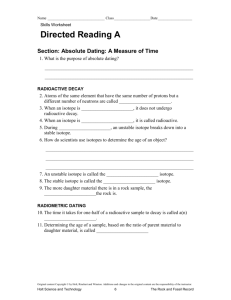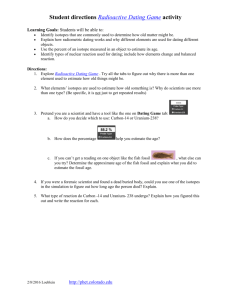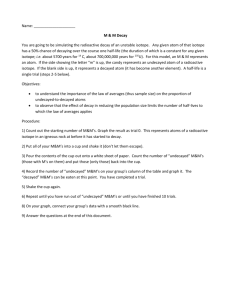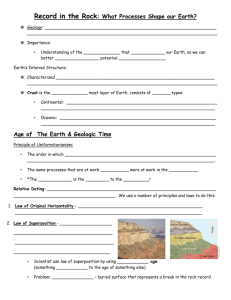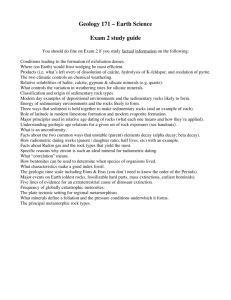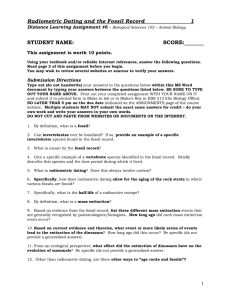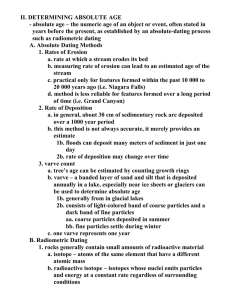Handout 8
advertisement
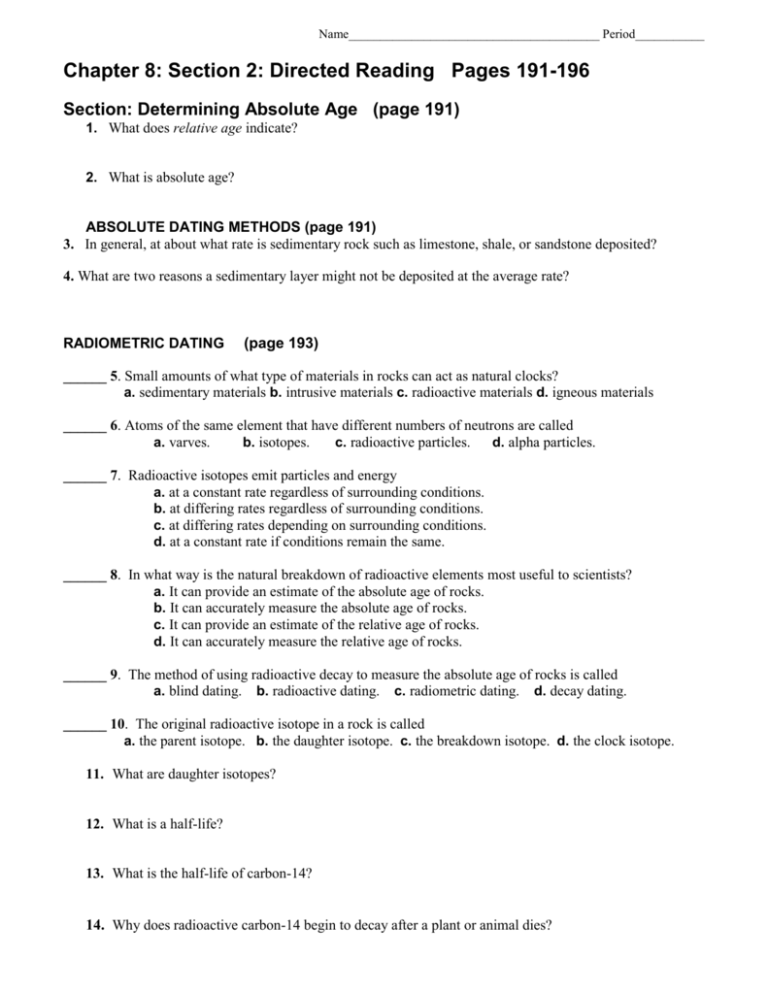
Name________________________________________ Period___________ Chapter 8: Section 2: Directed Reading Pages 191-196 Section: Determining Absolute Age (page 191) 1. What does relative age indicate? 2. What is absolute age? ABSOLUTE DATING METHODS (page 191) 3. In general, at about what rate is sedimentary rock such as limestone, shale, or sandstone deposited? 4. What are two reasons a sedimentary layer might not be deposited at the average rate? RADIOMETRIC DATING (page 193) ______ 5. Small amounts of what type of materials in rocks can act as natural clocks? a. sedimentary materials b. intrusive materials c. radioactive materials d. igneous materials ______ 6. Atoms of the same element that have different numbers of neutrons are called a. varves. b. isotopes. c. radioactive particles. d. alpha particles. ______ 7. Radioactive isotopes emit particles and energy a. at a constant rate regardless of surrounding conditions. b. at differing rates regardless of surrounding conditions. c. at differing rates depending on surrounding conditions. d. at a constant rate if conditions remain the same. ______ 8. In what way is the natural breakdown of radioactive elements most useful to scientists? a. It can provide an estimate of the absolute age of rocks. b. It can accurately measure the absolute age of rocks. c. It can provide an estimate of the relative age of rocks. d. It can accurately measure the relative age of rocks. ______ 9. The method of using radioactive decay to measure the absolute age of rocks is called a. blind dating. b. radioactive dating. c. radiometric dating. d. decay dating. ______ 10. The original radioactive isotope in a rock is called a. the parent isotope. b. the daughter isotope. c. the breakdown isotope. d. the clock isotope. 11. What are daughter isotopes? 12. What is a half-life? 13. What is the half-life of carbon-14? 14. Why does radioactive carbon-14 begin to decay after a plant or animal dies? Name ___________________________ Period ______ Chapter 8 Section 2 Review Page 196 1. What is the difference between relative and absolute age? 2. Explain why calculations of absolute age based on rates of erosion and deposition can be inaccurate. 3. Describe varves, and describe how and where they form. 4. Explain how radiometric dating is used to estimate absolute age. 5. Define half-life, and explain how it helps determine an object’s absolute age. 6. Suppose you have a shark’s tooth that you suspect is about 15,000 years old. Would you use 238U or 14C to date the tooth? Explain your answer.
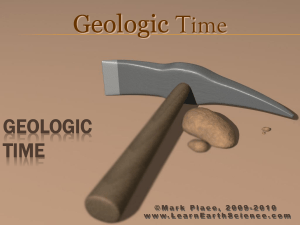
![tutorial #14 [nuclear physics and radioactivity] .quiz](http://s3.studylib.net/store/data/008407305_1-1884988a9e5162a6b7a2b0d0cf8c83c5-300x300.png)

